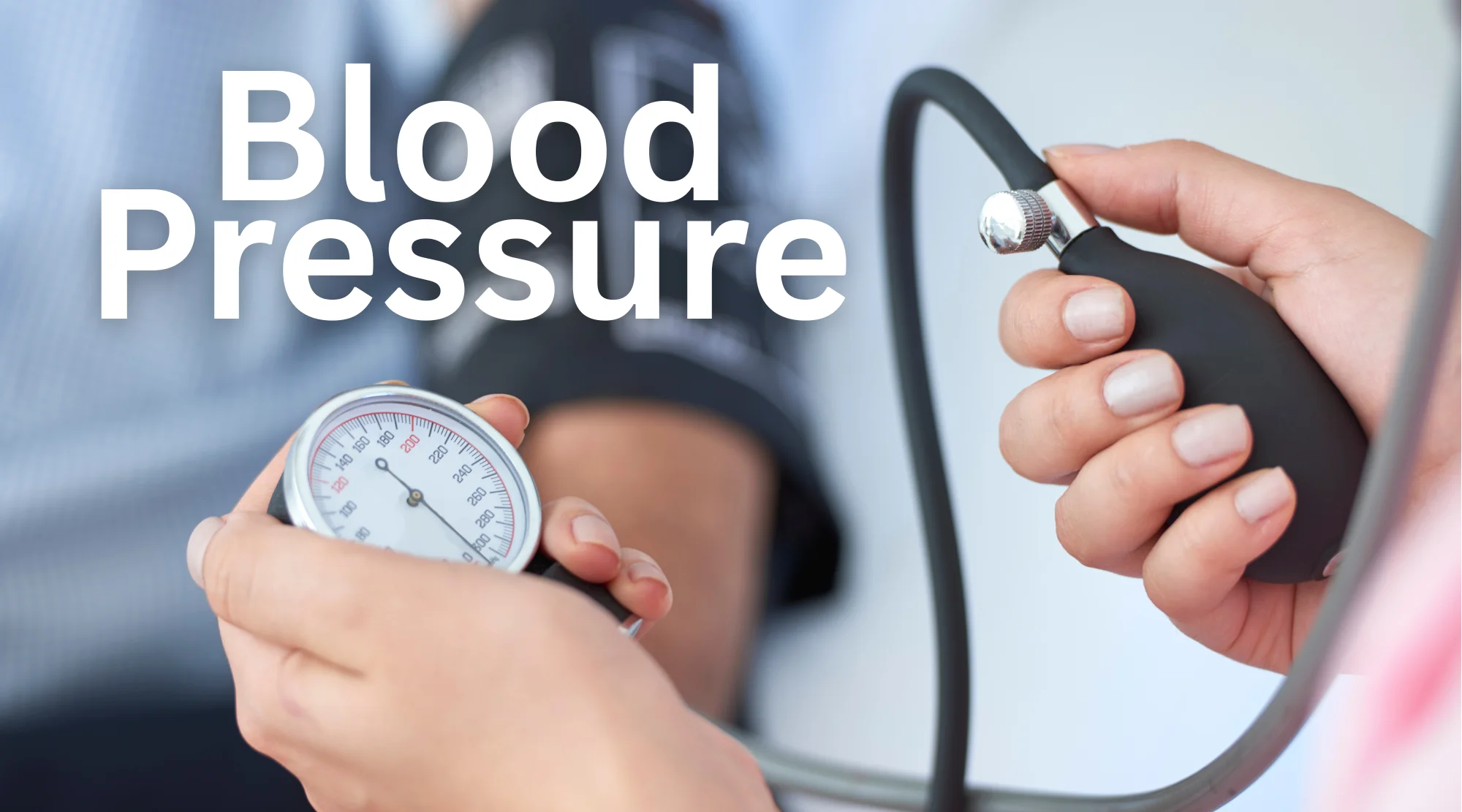The American Heart Association (AHA) has unveiled updated guidelines for blood pressure management in 2025, signaling significant advancements in the prevention and treatment of hypertension. These revised recommendations aim to provide healthcare professionals and individuals with the latest evidence-based strategies for maintaining optimal cardiovascular health. With high blood pressure as a leading contributor to severe health complications, understanding these updates is crucial for anyone striving to improve their well-being. This article dives into the key changes, offering insights into how they can be implemented for a healthier life.

Unpacking the 2025 AHA Blood Pressure Guidelines
The 2025 guidelines expand the scope of blood pressure management, going beyond the traditional focus on medication. They integrate lifestyle modifications, technological advancements, and personalized approaches to create a more holistic strategy. The AHA recognizes that managing blood pressure is not solely a clinical issue but a multifaceted one that affects daily living.
The new guidelines emphasize the importance of early detection and intervention. Regular blood pressure screenings are more critical than ever, especially for individuals with risk factors such as family history, obesity, or other pre-existing conditions. The expanded scope allows for a more comprehensive evaluation of an individual’s overall cardiovascular risk profile.
Moreover, the AHA stresses the significance of patient education and empowerment. Healthcare providers are encouraged to engage in detailed conversations with patients, providing them with the information and tools needed to make informed decisions about their health. This collaborative approach fosters a greater sense of ownership and adherence to treatment plans.
Key Changes and What They Mean for You
Several key updates define the 2025 AHA guidelines. The guidelines provide a more refined classification system for blood pressure levels, including prehypertension, Stage 1 hypertension, and Stage 2 hypertension. These classifications will assist healthcare providers in determining the appropriate course of treatment.
The updated guidelines place a significant emphasis on non-pharmacological interventions. These include dietary changes, increased physical activity, and stress management techniques. Specific recommendations regarding the DASH (Dietary Approaches to Stop Hypertension) diet are included. Learn more about how to maximize calorie burn and boost joint mobility by doing a 30-minute walking workout: 30-Minute Walking Workout: Maximize Calorie Burn and Boost Joint Mobility.
The guidelines also provide evidence-based recommendations for medication selection and dosage. Healthcare providers will be able to personalize treatment plans, taking into account a patient’s specific needs and risk factors. Furthermore, the guidelines provide detailed recommendations on the appropriate use of blood pressure monitors.
Lifestyle Modifications to Manage High Blood Pressure
Lifestyle modifications play a pivotal role in managing high blood pressure, often serving as the first line of defense or as a complementary strategy to medication. These changes are not just short-term fixes, but sustainable habits that contribute to overall health and well-being. The AHA guidelines for 2025 underscore their importance.
Dietary Changes: The DASH diet, rich in fruits, vegetables, whole grains, and low-fat dairy, is highly recommended. Limiting sodium intake is also crucial, aiming for less than 2,300 milligrams per day. You should also reduce your consumption of processed foods, saturated fats, and added sugars.
Regular Exercise: Aim for at least 150 minutes of moderate-intensity aerobic exercise or 75 minutes of vigorous-intensity exercise per week. Activities such as brisk walking, jogging, cycling, or swimming can be beneficial. Discover the surprising changes in your body and mind by reading: My Weekly Running Transformation: The Surprising Changes in My Body and Mind.
Stress Management: Chronic stress can elevate blood pressure. Incorporate relaxation techniques such as yoga, meditation, deep breathing exercises, or spending time in nature.
Weight Management: Losing even a small amount of weight can significantly impact blood pressure. Aim for a healthy body mass index (BMI) through diet and exercise.
Limiting Alcohol and Tobacco: Excessive alcohol consumption can raise blood pressure. Men should limit themselves to no more than two drinks a day, and women should limit themselves to one drink a day. If you smoke or use tobacco products, quitting is essential.
The Role of Technology and Monitoring in Managing Hypertension
Technological advancements are transforming the way we manage high blood pressure. Remote monitoring, wearable devices, and telemedicine are providing new ways to track blood pressure and manage hypertension. Patients are now more empowered than ever to take an active role in their care.
Blood Pressure Monitors: Using blood pressure monitors regularly is an important part of managing hypertension. The AHA recommends using an automated, cuff-based monitor. Ensure the cuff fits correctly and take readings at the same time each day for the most accurate results.
Telemedicine and Virtual Consultations: Telemedicine allows healthcare providers to monitor patients’ blood pressure remotely. This approach can provide more personalized care and better adherence to treatment plans. Regular consultations with a healthcare provider are also extremely important.
Mobile Apps and Wearable Devices: Mobile apps and wearable devices can help track blood pressure readings, medication adherence, and lifestyle changes. They provide individuals with real-time data and insights into their cardiovascular health.
These advancements offer the potential for early detection and personalized management of hypertension. However, it’s important to note that technology should complement, not replace, regular visits with your healthcare provider.
Medications and Treatment Plans
Medication remains a cornerstone of high blood pressure treatment, especially for individuals with elevated readings or other health conditions. The 2025 guidelines provide a more detailed approach to medication selection and treatment plans, enabling healthcare providers to tailor treatment to each patient’s specific needs.
Types of Medications: Several types of medications are used to treat high blood pressure. These include diuretics, ACE inhibitors, angiotensin II receptor blockers (ARBs), beta-blockers, and calcium channel blockers. The choice of medication depends on factors such as a patient’s blood pressure levels, other medical conditions, and potential side effects.
Personalized Treatment: The 2025 guidelines place a greater emphasis on personalized treatment plans. Healthcare providers now have access to more data and research to guide their treatment decisions. Treatment plans should include lifestyle modifications and medication, as appropriate.
Monitoring and Adjustments: Regular monitoring of blood pressure and side effects of medication is crucial. Healthcare providers should adjust the medication dosage or type as needed, based on the patient’s response to treatment.
Patient Education: Patients should be fully informed about their medications, including potential side effects, proper dosage, and the importance of adherence to treatment plans.
Integrating the 2025 Guidelines into Your Life
Adopting the 2025 AHA guidelines can be a positive step towards managing and preventing high blood pressure. This means partnering with your healthcare provider to create a comprehensive plan.
Consult Your Healthcare Provider: The first step is to talk to your doctor. They can assess your individual risk factors, evaluate your blood pressure, and help you develop a personalized plan.
Implement Lifestyle Changes: Focus on dietary adjustments, increased physical activity, stress management, and weight management.
Monitor Your Blood Pressure: Use a home blood pressure monitor to track your readings regularly.
Take Medications as Prescribed: If your doctor prescribes medication, take it exactly as directed. Don’t stop or change your medication without consulting your healthcare provider.
Attend Follow-Up Appointments: Regular check-ups are essential to ensure that your treatment plan is effective and to address any concerns you may have.
It is important to take care of your mental health to help manage high blood pressure. Consider AI Therapy to improve your mental health: AI Therapy: 5 Expert Tips to Protect Your Mental Health While Using Chatbots.
[IMAGEN-2]
The Importance of Early Intervention in High Blood Pressure
Early intervention is vital in managing high blood pressure and preventing severe health complications. The 2025 AHA guidelines emphasize the importance of early detection, which allows individuals to be proactive about their cardiovascular health.
Early Detection: Regular blood pressure screenings can help detect high blood pressure early. Early detection gives healthcare providers and patients more opportunities to make appropriate interventions.
Risk Factors: Several risk factors are associated with high blood pressure, including family history, age, obesity, and unhealthy lifestyle habits. If you have one or more risk factors, regular screenings are more important.
Prevention is Key: Prevention starts with lifestyle changes and regular health checks. Taking proactive steps can help you avoid or delay the onset of high blood pressure and reduce your risk of cardiovascular disease.
The Future of Blood Pressure Management
The future of blood pressure management is dynamic, with ongoing research and technological advancements promising improved care.
Advancements in Research: Ongoing research is driving new discoveries and insights into the causes and treatment of hypertension. This includes the development of new medications, innovative therapies, and personalized approaches.
Technological Advancements: Technology will continue to play a central role in managing high blood pressure. Remote monitoring, wearable devices, and AI-powered solutions will provide better insights into cardiovascular health.
Personalized Medicine: Personalized medicine will continue to be a key trend in hypertension management. Tailoring treatment plans to each patient’s unique needs and risk factors will become more common.
These advances will help healthcare providers to improve the health and well-being of individuals with high blood pressure.
Summary: Embrace a Proactive Approach to Blood Pressure Management
The 2025 AHA guidelines represent a significant step forward in managing high blood pressure. By embracing a proactive approach that includes lifestyle modifications, medication, and regular monitoring, individuals can take control of their cardiovascular health. Early intervention, patient education, and the integration of technology are essential components of a successful strategy. Prioritize your health, consult with your healthcare provider, and stay informed about the latest advancements in blood pressure management. If you are interested in health and fitness, consider reading: Luxury Gyms: Gen Z’s Fitness Revolution and the Rise of Wellness.














1 comment